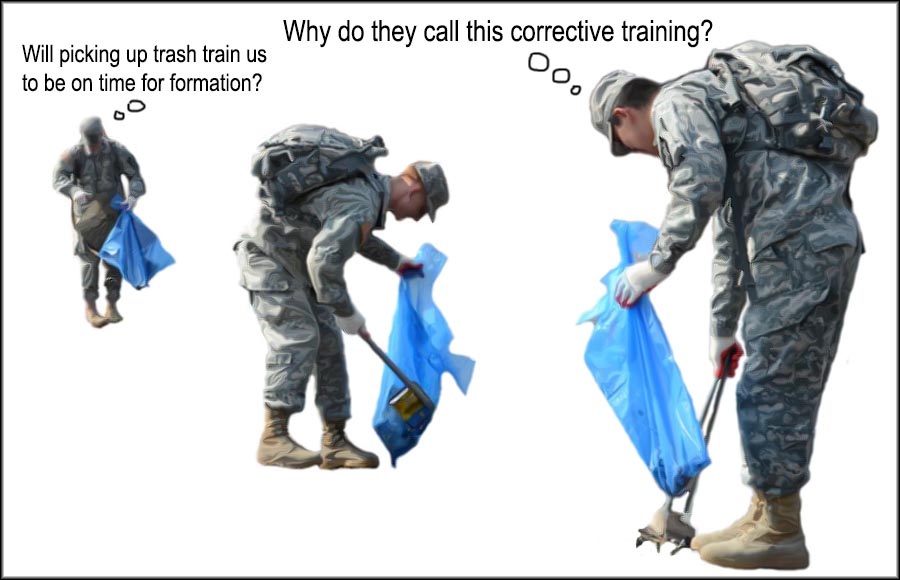Army Regulation Barracks : What it is
The Army Regulation Barracks: What It Is Are you curious about the Army Regulation Barracks and what it entails? Look no further! In this engaging post, we will explore the ins and outs of this important regulation that plays a significant role in the lives of soldiers. This article is written in en_US language, presented in an HTML format, with a starting paragraph followed by compelling content featuring h2 headings, image illustrations with alt tags, and informative paragraphs. We will refrain from mentioning the source of the data and the use of AI in generating this content. So, let's dive right in! 1. Understanding Army Regulation 670-1 Let's start by delving into the key aspects and significance of Army Regulation 670-1. This regulation serves as a comprehensive guide for soldiers' appearance and grooming standards within the U.S. Army. It outlines the requirements for uniforms, hairstyles, jewelry, tattoos, and personal hygiene. Whether you are an active-duty soldier or new recruit, understanding this regulation is essential for maintaining discipline and professionalism. Catering to soldiers' individuality while maintaining uniformity, AR 670-1 plays a crucial role in fostering unit cohesion and the Army's overall image. 2. The Evolution of Army Regulation 670-1 Over time, Army Regulation 670-1 has undergone several updates to reflect changing times and societal norms. This section takes a closer look at the evolution of AR 670-1, highlighting significant changes and their impact on soldiers. From specific hairstyle guidelines to the acceptance of certain tattoos, we explore how the regulation has adapted to embrace diversity while upholding military traditions. By understanding the historical context, soldiers can appreciate the importance of these regulations and their relevance in the modern Army. 3. Dress Code: Ensuring Uniformity and Professionalism Maintaining a professional appearance is a fundamental requirement in the U.S. Army. This section breaks down the dress code outlined in Army Regulation 670-1, examining the different types of uniforms, accessories, and grooming standards that soldiers must adhere to. We will discuss the guidelines for wearing the Army Combat Uniform (ACU), the Army Service Uniform (ASU), and specific requirements for items such as headgear, footwear, and insignia. Additionally, we will delve into the importance of maintaining proper grooming standards to portray a professional image at all times. 4. Hairstyles: Keeping it Neat and Tidy Your hairstyle is an integral part of your overall appearance in the Army. This section focuses on the guidelines outlined in AR 670-1 regarding hairstyles, covering both male and female soldiers. We will discuss acceptable hair lengths, appropriate styles, and the use of hair accessories. It is crucial to understand these guidelines to ensure that grooming standards are met while promoting safety and practicality in military operations. Find out how to stay within regulations while still expressing your personal style! 5. Tattoos and Piercings: Expressing Individuality Within Limits Body art and piercings have become increasingly popular forms of self-expression in today's society. However, the Army has specific guidelines in place regarding tattoos and piercings for its soldiers. This section explores the Army Regulation 670-1 guidelines surrounding tattoos, including their placement, size, and content. We will also address the rules surrounding body piercings and the importance of maintaining professionalism while embracing individuality. 6. Frequently Asked Questions (FAQ) To address common inquiries and provide valuable insights, we have compiled a list of frequently asked questions related to Army Regulation 670-1. This FAQ section aims to clear any uncertainties or misconceptions about the regulation, providing readers with accurate and up-to-date information. From queries about specific uniform components to inquiries about religious accommodations, this section will serve as a comprehensive resource for soldiers seeking further clarification on various aspects of AR 670-1. 7. Conclusion In conclusion, Army Regulation 670-1 is a vital component of maintaining discipline, professionalism, and uniformity within the U.S. Army. By adhering to the guidelines outlined in this regulation, soldiers contribute to the collective identity and image of the military. Understanding the various aspects, such as dress code, hairstyles, and tattoo regulations, enables soldiers to navigate the regulation successfully while expressing their individuality within the specified limits. Remember, adhering to AR 670-1 not only demonstrates your commitment to the Army's standards but also upholds the traditions and values the military holds dear. In this listicle, we have covered the significance of Army Regulation 670-1, its evolution over time, the dress code requirements, hairstyle guidelines, and rules pertaining to tattoos and piercings. By providing helpful information and answering frequently asked questions, we hope to shed light on this essential regulation for soldiers. Stay confident, professional, and proud to be part of the U.S. Army!  Image Source : www.flickr.com
Image Source : www.flickr.com  Image Source : petsretro.blogspot.com
Image Source : petsretro.blogspot.com  Image Source : www.youtube.com
Image Source : www.youtube.com  Image Source : www.globalsecurity.org
Image Source : www.globalsecurity.org  Image Source : petsretro.blogspot.com
Image Source : petsretro.blogspot.com  Image Source : armymilitary.net
Image Source : armymilitary.net  Image Source : civildefence.info
Image Source : civildefence.info  Image Source : www.rallypoint.com
Image Source : www.rallypoint.com
Enlisted Barracks (700 Series), U. S. Army, Fort Bragg, No… | Flickr
 Image Source : www.flickr.com
Image Source : www.flickr.com Army Regulation On Pets In Barracks - Pets Retro
Army Regulation AR 670-1 - YouTube
 Image Source : www.youtube.com
Image Source : www.youtube.com 670
FM 3-05.401 Appendix I Techniques In Dislocated Civilian Operations
 Image Source : www.globalsecurity.org
Image Source : www.globalsecurity.org barracks civilian dislocated
Army Regulation On Pets In Barracks - Pets Retro
 Image Source : petsretro.blogspot.com
Image Source : petsretro.blogspot.com Army Regulation 635-200 - Army Military
 Image Source : armymilitary.net
Image Source : armymilitary.net Incredible Army Regulation 670-1 2022
 Image Source : civildefence.info
Image Source : civildefence.info Army Regulation (AR 600-63) States That Soldiers Are To Be Allowed To
 Image Source : www.rallypoint.com
Image Source : www.rallypoint.com Army regulation (ar 600-63) states that soldiers are to be allowed to. Fm 3-05.401 appendix i techniques in dislocated civilian operations. Barracks civilian dislocated. Army regulation ar 670-1. Enlisted barracks (700 series), u. s. army, fort bragg, no…